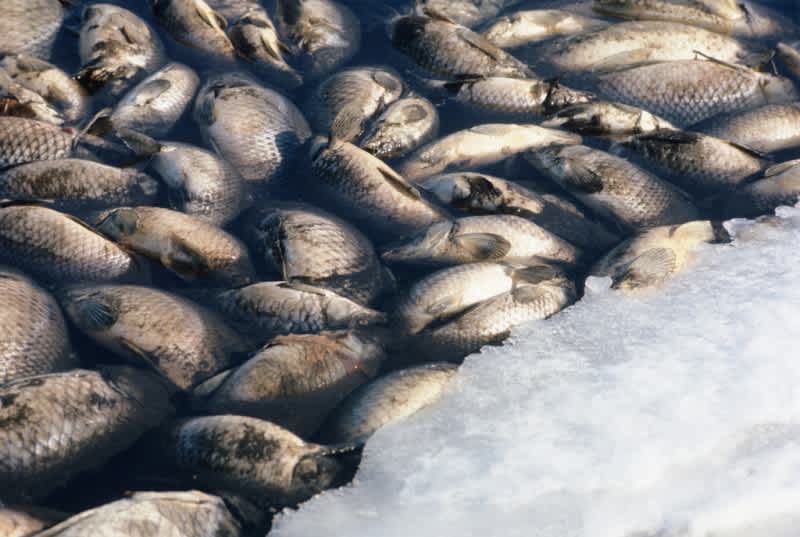Minnesota Officials Fear High Fish Kill Following Rough Winter
OutdoorHub Reporters 03.27.14

Minnesota’s nickname may be the “Land of 10,000 Lakes,” but officials are now concerned for the state’s fish after a harsh winter left many of those lakes in a deeper-than-normal freeze. According to the Star Tribune, some two dozen lakes in central and southern Minnesota are already seeing the effects of “winterkill” and more could follow.
“As of today, we’re just preparing for the worst, and if it’s bad, we’ll be doing more fish stocking than we normally would,” said Department of Natural Resources (DNR) regional fisheries manager Jack Lauer.
Winterkill is the most common form of fish die-off and is caused by severe ice and cold. It occurs when thick ice blocks sunlight from reaching oxygen-producing plants. With remaining oxygen quickly consumed by aerobic bacteria, water below thick ice loses its ability to support life. Winterkill is common in many parts of the United States during winter, but this year’s especially frigid temperatures prompted fears that it may be much worse than usual.
According to Minnesota DNR officials, the first fish to die are game fish like bluegill, bass, walleye, perch, northern pike, and crappie. Trout, which require the most oxygen and are easily stressed, are usually the first to go. Some of the hardier carp and suckers are more resistant.
“I’d say bullheads go last,’’ said Lauer. “If we get [dead] bullheads […] we know it’s been a significant kill.’’
The early signs of winterkill can be spotted when fish gather at breaks in the ice to “breathe.” Some of Minnesota’s larger and more popular lakes have aeration systems which reduce the possibility of a severe die-off.
While a large winterkill can be detrimental to Minnesota’s lakes, wildlife officials say there are some benefits to the die-off. An especially cold winter could balance out lakes that have a high carp population, killing off the fish to allow for other species to be reintroduced. Wildlife officials also say that winter kill is often followed by improved water quality, vegetation, and even the return of some native species. Fish may also bounce back quickly from a large die-off, leading the DNR to plan around the “boom and bust” cycle of Minnesota’s lakes.
Experts will have to wait until the ice recedes before they can gauge the full impact of this year’s winterkill. DNR officials advise residents who observe dead or struggling fish to report their findings to a local DNR office. The information will help the agency decide how and where to conduct follow-up fish stocking.

